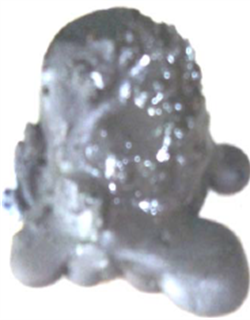Characteristics of briquettes from plastic pyrolysis by-products
Main Article Content
Abstract
Pyrolysis has been proven as a method to reduce plastic waste and produce useful products, especially liquid fuels. However, plastic pyrolysis also produces gases and char as by-products which are being investigated for useful products. Therefore, our present study aims to investigate the char characteristics of plastic pyrolysis for further use as briquettes. Seven samples of char by-products from the pyrolysis process of low-density polyethylene (LDPE) plastic at various reaction temperatures and catalyst types were studied. The proximate test is used to determine the properties of char such as moisture content, ash, volatile matter, and fixed carbon while the bomb calorimeter is used to determine the calorific value. Briquettes are formed by mixing 4 grams of char and 0.5-1 gram of binder (1% starch and 90% water). The briquettes were formed into solid cylinders with a diameter of 1.75 cm and formed with a pressure of 10 kg/cm2. Furthermore, the impact resistance index (IRI) was used to test the performance of the briquettes and showed an IRI value between 100 and 200. However, of the seven char samples tested, three of them were impossible to process into briquettes because they melted during the combustion test.
Downloads
Article Details

This work is licensed under a Creative Commons Attribution-NonCommercial 4.0 International License.

